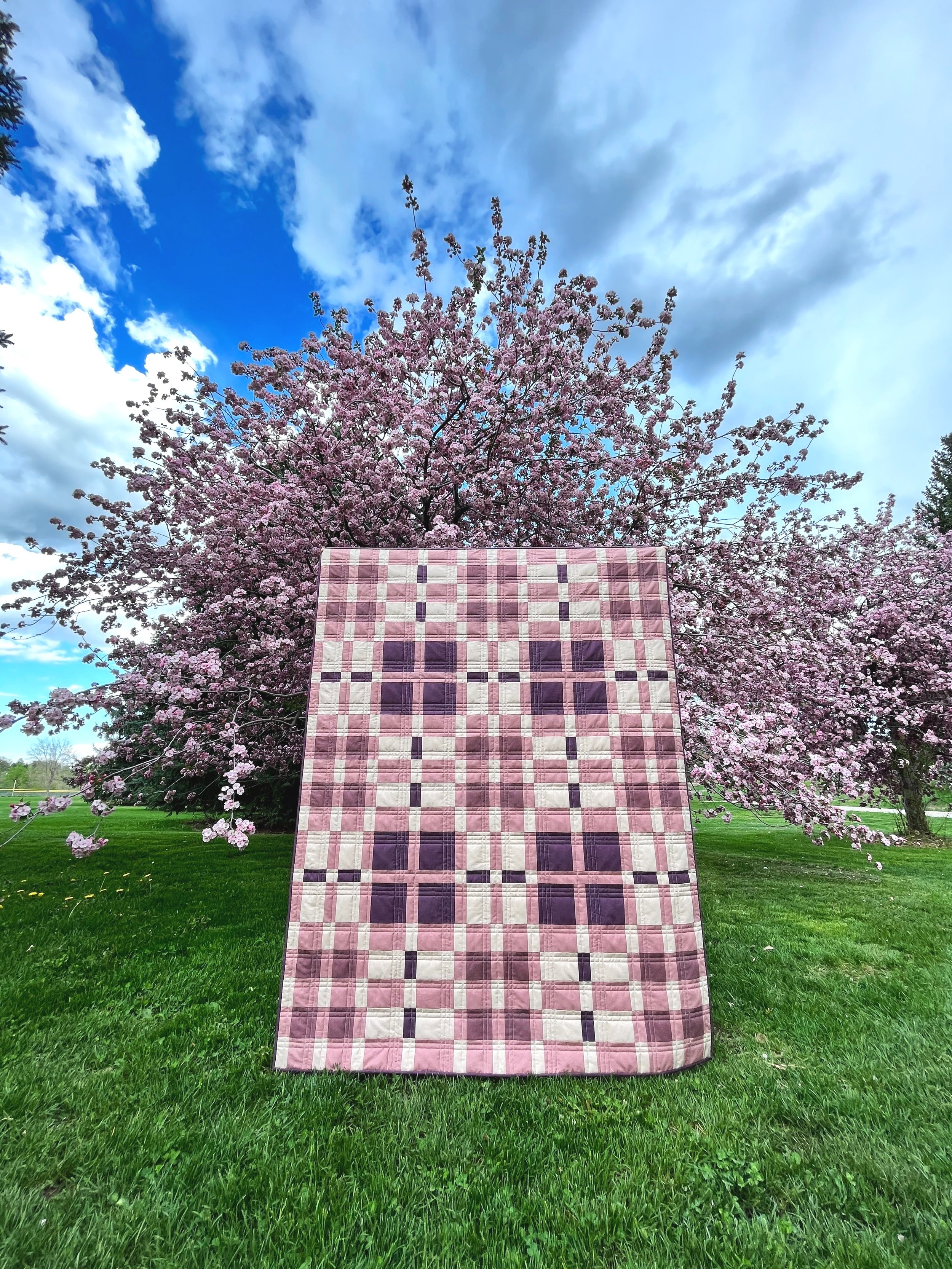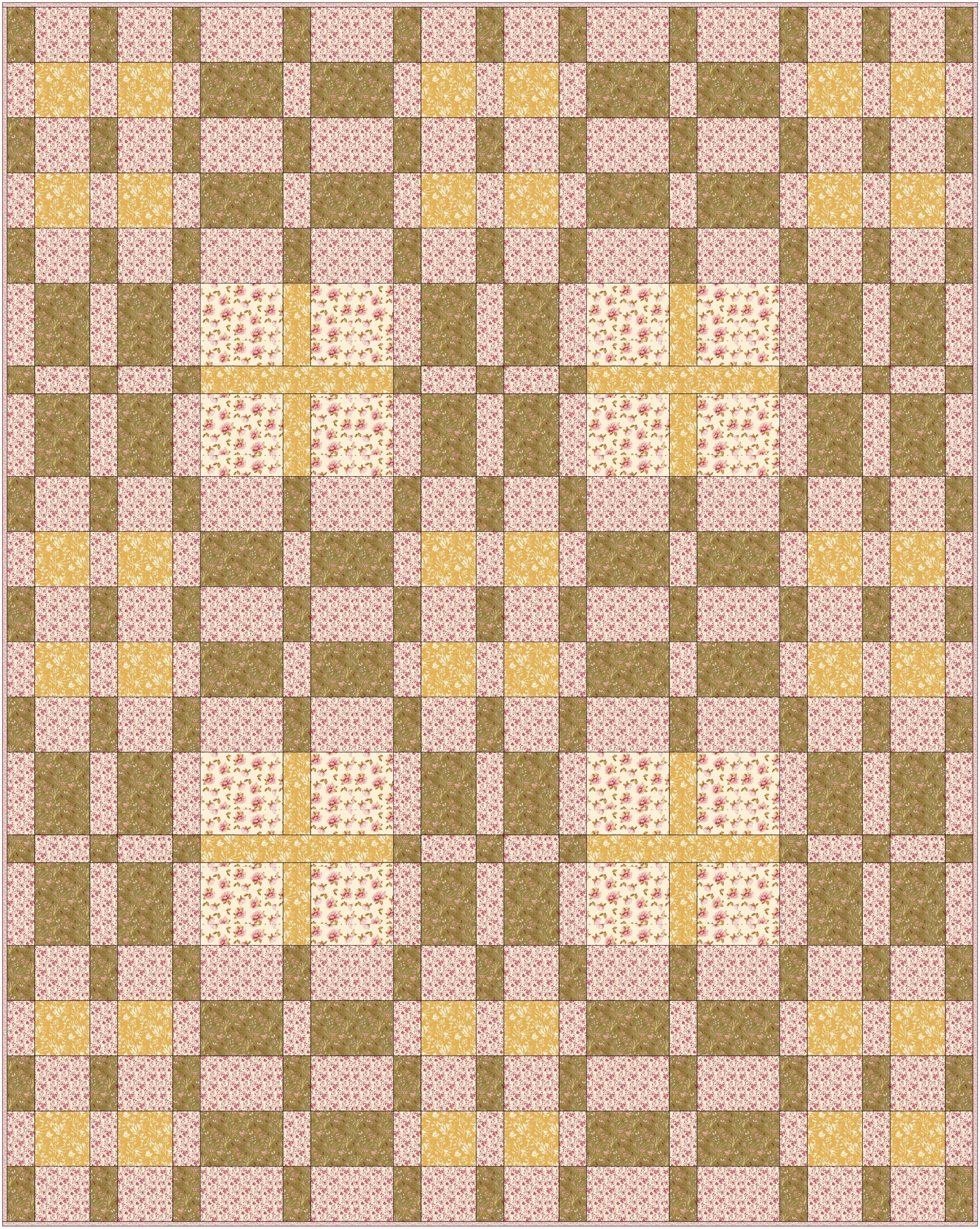Grid View Quilt SAL: Week 1
Week 1: Welcome, Select Fabric, and Gathering Supplies
Welcome to Week 1 of Grid View Quilt Sew Along (SAL), and I’m so happy you’re here! Grid View is perfect for the beginner quilter or if you are looking for a quick sew. Hello! I’m Katie, the owner and creator behind Zahm Co. Click here to learn a little about me.
If you haven’t yet, purchase the PDF Grid View Pattern or the Paper Grid View Pattern and read through it (twice, if you’re like me).
Grid View Quilt Sew Along Overview
Who? You! Me! Us! Anyone is welcome to participate.
What? We will be making a throw Grid View quilt top. You are welcome to make your preferred size but to participate in weekly prizes and a chance at the grand prize, you must submit a small throw or larger.
Where? Online. For additional support and community, join our Zahm Co Patterns Facebook group, a safe space to ask questions and gather understanding.
When? July 10 - July 31
Why? Do you know the best part about a Sew Along? The COMMUNITY! Whether you quilt as a hobby or your profession, a quilt Sew Along is for the whole community. Pick some fabrics, and try a new technique; this is a perfect place to branch out and grow as a quilter. Follow along on socials with the tag #gridviewquiltsal to see what over one hundred other quilters are making!
Prizes: We will offer a weekly prize to one winner who enters their photo to Instagram and use #gridviewquiltsal. (details below)
Receive 20% off longarm E2E quilting on your Grid View quilt from Cara of Sew Colorado Quilting now through December 31, 2023.
SAL Schedule
Week 1: Select Fabric & Gather Supplies - July 10th
Sponsor: Quiltfolk - One-Year Subscription + Quiltfolk Life V1 Book ($85)
Week 2: Cut Fabric + Sew Block 1 - July 17th
Sponsor: Creative Grids - Stripology XL Ruler ($85)
Week 3: Sew Blocks 2 + 3 + 4 - July 24th
Sponsor: Elegant Virgule Inc - $50 gift card + Liberty Bundle of Tana Lawn fabrics ($100)
Week 4: Assemble Quilt Top - July 31st
Sponsor: Oliso - (1)ProPlus SmartIron + (1)Mini Iron ($260)
Sponsor: Ollie Fabrics - $50 Gift Card ($50)
Week 1 Assignment: Select Fabric and Gather Supplies
This week we are picking fabrics, breaking down the pattern, and reviewing design options. Let’s go! If you’re looking for an easy week, you can shop Grid View Quilt Kits, (scroll down for more kits) or if you are up for more of a challenge, dive into your stash or shop around. But before you purchase fabric, review the tips below to understand the pattern better.
Note: I am making a small throw using woven fabrics. All photos and sizes in this four-week blog series will represent this.
Tip 1: Read the Grid View Quilt Intro Blog Post + Video
Check out a Grid View quilt in-depth blog post when I released the pattern + it includes a 20-minute video tutorial. Click here to go to the blog post
Chapters
00:05 Introduction
00:14 Pattern Name and Design
00:35 Sizing Options
01:02 Fabric Requirement Tips
01:29 Color Inspiration + Bundles
04:33 Throw vs. Twin
05:00 Cutting Techniques
06:13 Stripology XL Ruler demo cutting yardage
10:21 Strip Piecing
11:47 Chain Piecing
13:26 Stripology XL Ruler demo cutting block rows
15:06 Nesting Seams
21:35 Thank You
Tip 2: Pick Quilt Size
Keeping it simple, the grid view pattern is written for a baby (35” x 44”), small throw (52.5" x 66”), or twin size (70" x 88”). Note - to be eligible for the sew along prices, you must make a small throw or larger.
Tip 3: Fabric Requirements
See the pattern or image below. Consider ordering an extra 1/8 or 1/4 of a yard of Fabric A - D if you are new to quilting or like backup fabric for the “oops” that can occur. Before ordering fabric, check the directional fabric tip for Fabric B.
Tip 4: Directional Fabrics - Block 4
Directional fabrics will not interfere with this pattern for the most part unless you are using them for Fabric B (see image on left). I’ve done this twice now; the first time I pieced mealed it to work (see image on the right), the strips were so tiny it was hard to see after the quilting. But I purchased additional fabric for the one I am working on now to get the right cut. Please note that I am sure this doesn’t bother most quilters, but what can I say?
Fabric B Requirement Changes (this is optional)
Baby: add 1/8 yard
Small Throw: add 1/4 yard
Twin: add 1/3 yard
Note: Cutting Instructions will change, which will be listed in Week 2 blog post.
Block 4, Row 2, B3 - the horizontal pin strip in the image, will be the only cut we will change for Fabric B directional fabric.
If you don’t mind this look, I would just cut one more B3 so you can sew a few strips together to use.
Tip 5: Looking for a Challenge?
I highly recommend using woven fabrics to challenge your piecing skills during this sew-along. Changing your fabric material can provide an excellent opportunity to refine your piecing techniques, making Grid View an ideal pattern for practice.
Tip 6: Color Theory
Color theory is like a secret weapon for quilters. It's all about how different colors work together and how they make people feel. When you understand color theory, you can make awesome quilts that look balanced and cool. You can mix colors that go well together or use opposite colors for a bold and exciting look. It also helps you pick matching fabrics and create a focal point in your quilt. Whether you're playing with the color wheel, trying out different combos, or just figuring out what colors are hot or cold, color theory is a super useful tool for making quilts that grab attention and make people go, "Wow!"
Tip 7: Color Harmonies
Color harmonies refer to pleasing combinations of colors that work well together. They create a sense of balance and visual appeal. There are different types of color harmonies, such as complementary, analogous, and triadic. Complementary colors are opposite each other on the color wheel and create a high contrast and energetic look. Analogous colors are next to each other on the color wheel, producing a harmonious and calming effect. Triadic color harmonies involve three colors that are evenly spaced on the color wheel, resulting in a vibrant and balanced composition. Understanding color harmonies helps quilters select color schemes that enhance their quilts' overall aesthetic and impact.
Monochromatic - achieved by using different shades, tints, or tones of a single color.
Complementary - created by combining colors that are opposite to each other on the color wheel.
Anaglous - achieved by using colors that are adjacent to each other on the color wheel.
Triadic - created by selecting three colors that are evenly spaced from each other on the color wheel.
Tetradic - achieved by using four colors that are evenly spaced from each other on the color wheel, typically consisting of two complementary color pairs.
Tip 8: Pick Fabrics A - D
Pull it all together. Are you making this quilt to gift, keeping it yourself, or maybe it’s a mystery where it will land? I ask myself these questions to help me seek clarity and determine the direction. But don’t forget to have fun with it! So many colors or fabric prints can work for Fabrics A - D, but note the square size you will be cutting and how much print will show. I would probably avoid the large prints, but it depends on your vision. Trust your gut and try not to overthink it.
Grid View Quilt Kits
Basic Quilting Supplies
Sewing Machine
Needles
Thread
Fabric
Straight Pins
Seam ripper
Ironing board
Rotary Cutter
Cutting Mat
Thread snips
Bonus Quilting Supplies
Fabric Requirements
Katie’s Week 1: Fabric Selection
Fabric A: Native Nectar in Lavender
Fabric B: Wings in Light Fushia
Fabric C: Ladder Stripe in Pink Blossom
Fabric D: Small Monarch in Foxglove
Fabric A, B, C, D from left to right
Enter Week 1 Prize
To enter the Week 1 prize, introduce yourself and post a photo of your fabric pull. Post on Instagram and use the hashtag #gridviewquiltsal. Post by Sunday, July 16th, 11:59 pm MST, to be entered into the Week 1 prize.
Week 1 Prize - One lucky person will win a one-year subscription to Quiltfolk Magazine + Quiltfolk Life V1 Book ($85)
Sponsor: Quiltfolk
Winner: @shanna.money, congrats Shanna!















